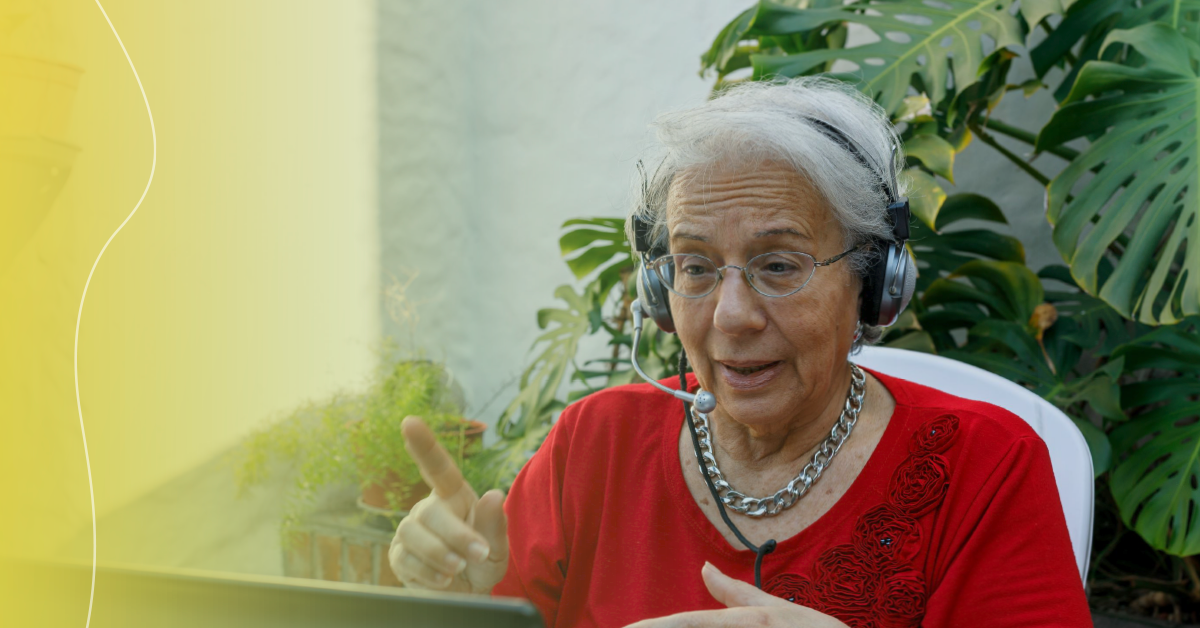“Hello, can you see me?” This was the question with which Peruvian entrepreneur and founder of TV Plateada, Cecilia Barreto, opened her remarks at the EU-LAC Silver Economy Forum. This event, held in January 2025 in Barcelona and co-organized by the IDB and Fundación “la Caixa,” aimed to discuss the challenges and opportunities of the silver economy, as well as to share experiences between the two regions. Today, that question resonates beyond the forum: it is an urgent call to make visible and recognize the value, creativity, and determination of those who have accumulated decades of experience.
Why We Talk About the Silver Economy
Demographic change is a reality. The global population of older adults—those over 60 years old—is growing at a rate of 3% annually. Currently, this group includes nearly two billion people and represents the market of the “silver economy,” which generates close to $22 trillion annually.
Latin America and the Caribbean is aging very rapidly: by 2060, it is expected that 3 out of every 10 Latin Americans will be over 60. This will pose major social and economic challenges related to care, finance, employability, and entrepreneurship. However, it also presents a great opportunity for development and economic growth. While ageism presents a complex challenge—especially when it comes to employment and entrepreneurship—the opportunity to leverage the vast silver talent pool is even greater.
Experience, Purpose, and Innovation: The Engine of Silver Entrepreneurship
Silver entrepreneurship has two equally valuable sides: on one hand, emerging businesses driven by older adults; on the other, those led by younger generations who develop products and services focused on the needs of this population.
Silver entrepreneurs bring to the ecosystem a powerful combination of experience, well-established networks, and soft skills, which allow them to identify real opportunities in different market sectors. For many, entrepreneurship becomes a way to stay active and contribute to their communities.
However, the path of silver entrepreneurship is not without challenges: limited access to financing, the digital gap, and age-related stereotypes remain significant barriers to overcome.
To address financing obstacles in the silver economy, specialized venture capital funds have emerged, such as Dadneo Capital in Chile and Primetime Partners in New York. In addition, IDB Lab has supported programs to minimize the challenges faced by entrepreneurs in the silver economy, such as Ecosistema Plateado in Peru and the Pensar en Grande initiative in Uruguay.
Breaking Myths About Working in Old Age
Not all older adults want to start a business—many prefer to continue working and remain active in the labor market they know and enjoy. However, they face stereotypes that associate them with lower physical or mental capacity, limited adaptability to new technologies, and higher labor costs, especially in health. Added to this is the idea that, being close to retirement, it is not worth investing in their training. This is even more severe for women, who often face a double barrier due to age and gender.
But far from being a burden, older adults bring experience, stability, and interpersonal skills, and contribute to conflict resolution and teamwork. Including them strengthens decision-making, improves workplace climate, and promotes innovation through generational diversity.
There have been interesting initiatives in the region to promote inclusion in the labor market, such as Labora, a tech platform in Brazil for productive inclusion that aims to foster diversity in employment; or Ana Care, a Mexican company focused on strengthening the care sector, positioning it as a key opportunity to boost the labor market.
Five Actions to Unlock the Potential of Silver Talent
It is important to create the conditions to fully integrate older adults who want or need to participate in the labor market and to take advantage of the opportunities the region offers. To achieve this, both the public and private sectors can take concrete actions:
- Promote labor inclusion policies that encourage the hiring of older adults through tax incentives, continuous training programs, and awareness campaigns to eliminate age-related biases.
- Encourage reskilling and digital training programs targeted at older adults, strengthening their capabilities in a constantly evolving labor market.
- Create intergenerational mentoring networks where older adults share their experience with youth and learn new tools and approaches.
- Expand access to financing by promoting investment funds and credit lines for silver entrepreneurs, as well as incubators and accelerators.
- Change the narrative, promoting positive messages about active and productive aging.
Promoting the silver economy is not just about responding to a demographic need—it is about embracing a vision of development that promotes equal opportunity. At the IDB, together with a network of global partners, we are committed to promoting comprehensive programs and actions that support the care sector (such as the IDB Cares initiative), silver finance, and the employment and entrepreneurship of older adults.


Leave a Reply